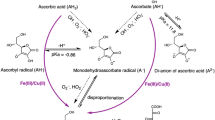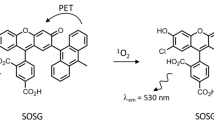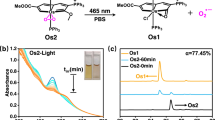Abstract
The nitro-aromatic radiosensitizing drugs are selectively toxic to hypoxic mammalian cells, and this toxicity can be greatly increased by the addition of ascorbate. The ascorbate itself is not toxic to either hypoxic or aerobic cells (as long as catalase is present to prevent the formation of significant concentrations of hydrogen peroxide) and the mixture of ascorbate plus radiosensitizer is not more toxic to aerobic cells. Sulphydryl reducing agents and dithionite have an effect opposite to ascorbate and decrease the toxicity of nitro-aromatic drugs under hypoxic conditions. Sulphydryl reducing agents are also reported to nullify the radiosensitizing properties of nitro-aromatic drugs, in contrast to ascorbate which has no effect on the radiosensitizing properties. The toxicity of nitro-aromatic drugs decreases rapidly with increasing O2 concentration. This decrease is much less rapid when ascorbate is present. The role of ascorbate in this case may be primarily as an O2 scavenger, although it is also possible that the toxic species produced by radiosensitizer-ascorbate mixtures is less easily removed or detoxified by O2.
This is a preview of subscription content, access via your institution
Access options
Subscribe to this journal
Receive 24 print issues and online access
$259.00 per year
only $10.79 per issue
Buy this article
- Purchase on Springer Link
- Instant access to full article PDF
Prices may be subject to local taxes which are calculated during checkout
Similar content being viewed by others
Rights and permissions
About this article
Cite this article
Koch, C., Howell, R. & Biaglow, J. Ascorbate anion potentiates cytotoxicity of nitro-aromatic compounds under hypoxic and anoxic conditions. Br J Cancer 39, 321–329 (1979). https://doi.org/10.1038/bjc.1979.56
Issue Date:
DOI: https://doi.org/10.1038/bjc.1979.56
This article is cited by
-
Hypoxic regulation of cytoglobin and neuroglobin expression in human normal and tumor tissues
Cancer Cell International (2010)
-
Modulation of oxygen consumption rate and vascular endothelial growth factor mRNA expression in human malignant glioma cells by hypoxia
British Journal of Cancer (1999)
-
Relationship between the melanin content of a human melanoma cell line and its radiosensitivity and uptake of pimonidazole
Cancer Chemotherapy and Pharmacology (1993)
-
Influence of ascorbic acid and glutathione on the microsomal metabolism of nitroheterocyclic compounds
Pharmaceutical Chemistry Journal (1990)
-
Ultrastructural changes in V79 hamster lung fibroblasts during hypoxic exposure
Virchows Archiv B Cell Pathology Including Molecular Pathology (1985)



